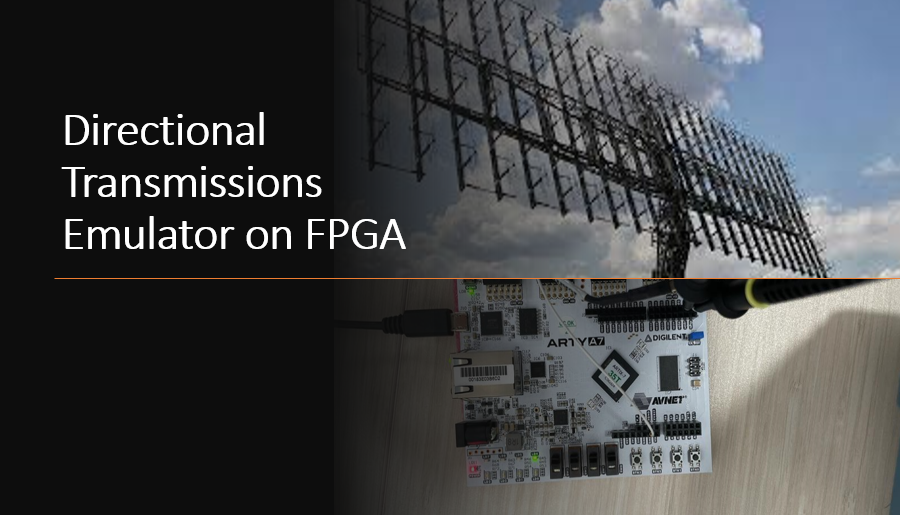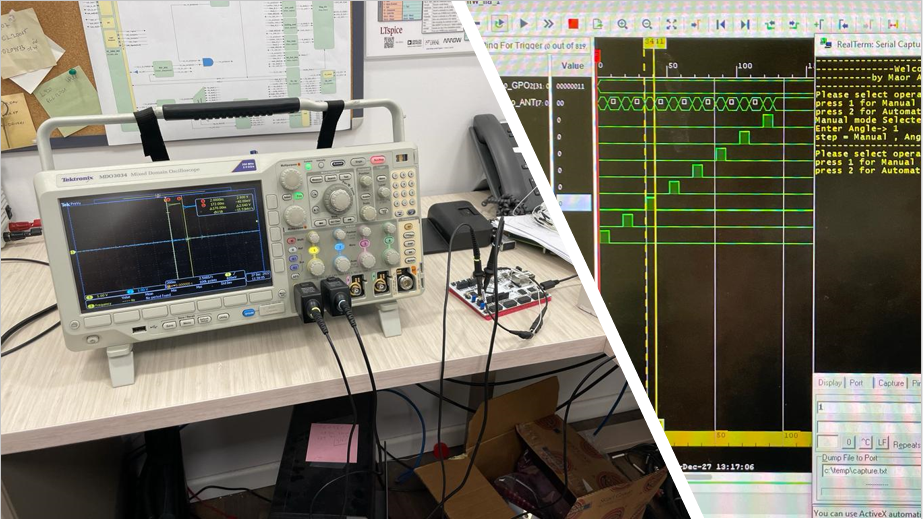Creating the core of a directional antenna array transmission emulation, that is a digital implementation
on an FPGA that showcases the capability to calibrate the transmission to a certain direction.

The goal of the project is to emulate the transmission of an eight element antenna array towards
a certain direction. The principle behind the directional transmission of an antenna
array is the constructive interference of all the signals being sent from each element in
the array, this way a single strong signal can be created from multiple weaker signals
being sent from each element in the antenna array.
Therefore, the core of the project is to take generate a signal (a pulse) and create eight identical
signals (one for each element in the antenna array) with a phase delay between them that would
cause them to constructively interfere in the direction of the transmission.
The means for the emulation is an FPGA board, using both VHDL and C for implementing HW and SW logic.
Two modes of operation have been implemented, ‘Manual’ and ‘Automatic’, the former being a basic
emulation of a transmission to a single given direction, and the latter being a somewhat simulation of
an electronic scan with the array, simulating the fact that real life antenna arrays can quickly
calibrate different signals to different directions. In either of the operating modes the
resulting eight antenna array signals can be seen on a ChipScope waveform or/and
with an oscilloscope connected to the FPGA board.
The implementation of the project on the FPGA board accurately showcases the core principle of operation
behind directional antenna arrays. In addition the technical implementation on the FPGA has been analyzed,
and multiple methods of implementation with different costs in logic, time, and accuracy have been
overviewed and presented, making a possible base of a future project that expands on this topic.


